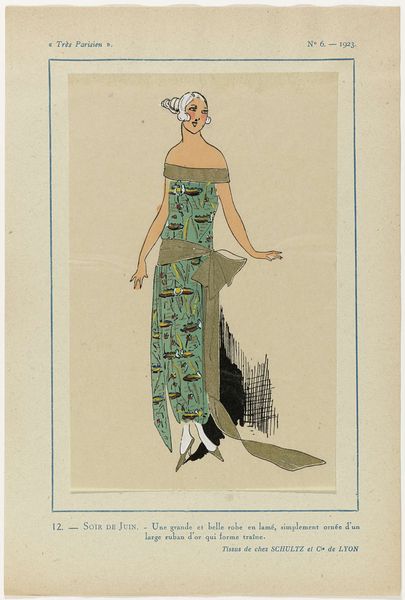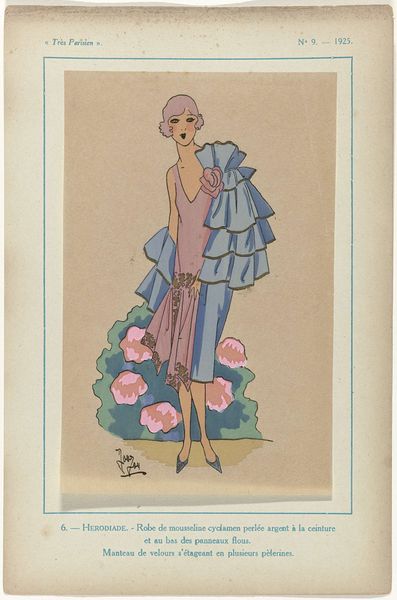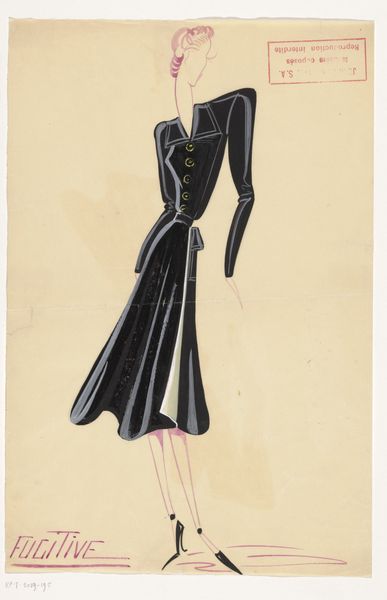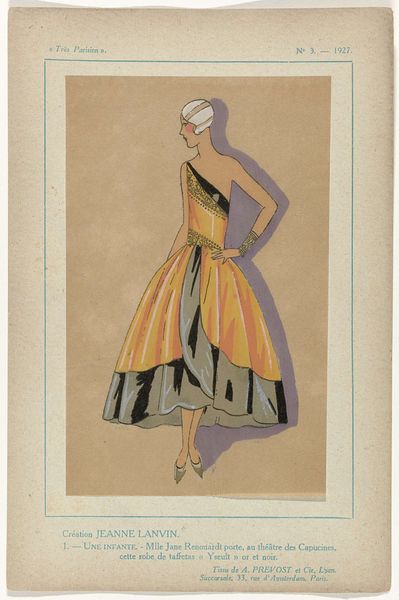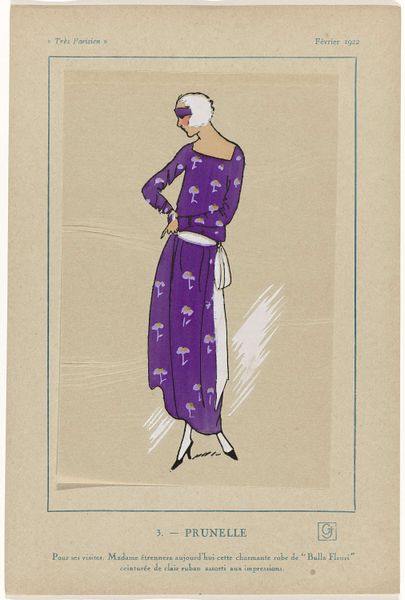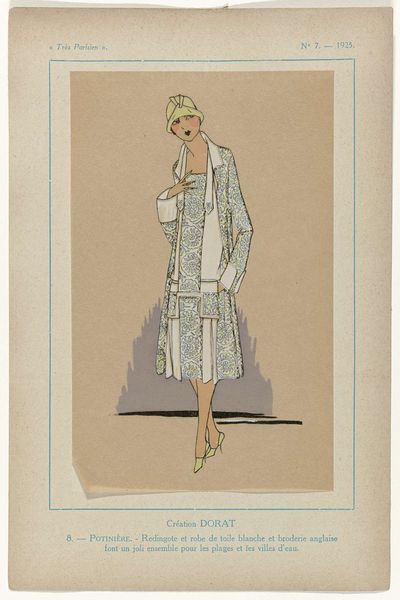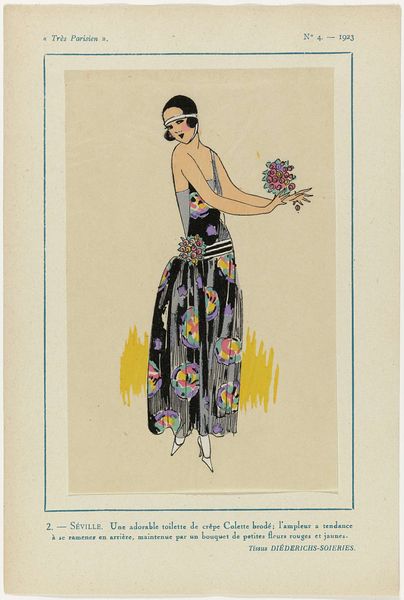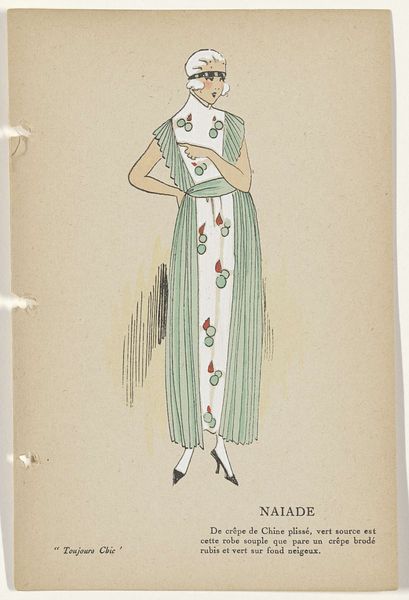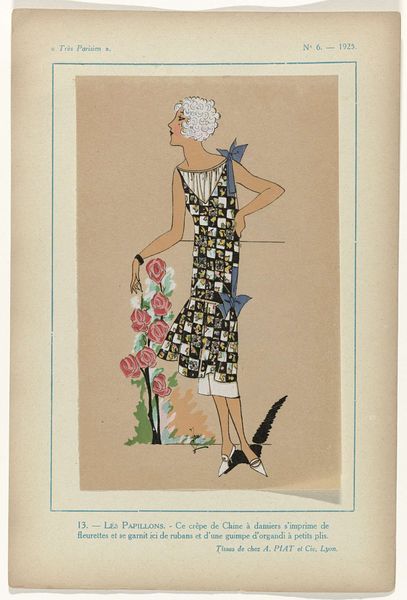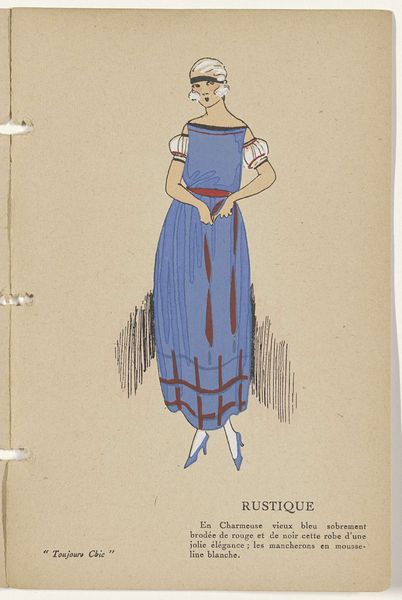
drawing, watercolor
#
portrait
#
art-deco
#
drawing
#
figuration
#
watercolor
#
historical fashion
#
watercolour illustration
#
fashion sketch
#
dress
Dimensions: height 305 mm, width 204 mm
Copyright: Rijks Museum: Open Domain
Curator: We're looking at "Frivole," a watercolor and drawing design for a dress, created in 1937 by Jeanne Lanvin. It’s held here at the Rijksmuseum. Editor: First impression? Well, there’s a definite air of optimism about this sketch, almost a carefree essence in that little floral print. It reminds me of summer afternoons and gentle breezes. Curator: Exactly. Lanvin really captures that feeling with such simple lines. And notice how the pattern almost seems to float on the paper. She was interested in exploring not just design but the entire making, distribution, and consumption of luxury garments, wasn't she? Editor: Indeed! I find myself immediately thinking about the labor involved in producing the fabric. You see, even what appears frivolous demanded careful execution, from the textile workers weaving that specific print, the sewers interpreting the sketch in three dimensions. Fashion sketches represent a specific stage in that textile and clothing manufacturing chain, when these design concepts become material realities. Curator: Absolutely, it really reflects that period’s shift toward ready-to-wear while retaining an elegance. Do you get a hint of Art Deco as well, that streamlined shape? Editor: Absolutely! And it really comes across in that colour sample at the side, almost as if presenting potential color schemes or highlighting that exact combination within that specific print! Curator: It's delightful, and yet poignant, considering the looming shadow of war in Europe at the time. Almost as if design, even "frivolous" design, tried to block out any kind of disruption and was necessary for that sense of stability. Editor: Fashion, particularly in the interwar period, reflected both social change and societal anxiety. You can see how design provided a counterpoint, projecting elegance even if fleeting. It wasn’t only decorative; the garments constructed offered dignity in the process of production, use, and conservation, too. Curator: What a lovely thing to ponder, considering all of this piece entails. The simplicity invites deeper contemplation about labor. Thank you! Editor: Thanks. Next time, let's look at something involving serious beadwork.
Comments
No comments
Be the first to comment and join the conversation on the ultimate creative platform.
